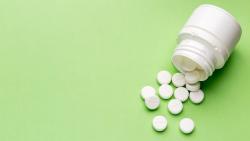
OR WAIT null SECS
- About Us
- Advertise
- Contact Us
- Editorial Info
- Editorial Contacts
- Editorial Advisory Board
- Do Not Sell My Personal Information
- Privacy Policy
- Terms and Conditions
© 2024 MJH Life Sciences™ and Pharmaceutical Technology. All rights reserved.
Supplementary Handwashing Techniques to Improve Hand Hygiene
A fluorescence test method was used to visually evaluate handwashing efficacy. Difficult-to-clean areas on skin such as skin folds and webbing between fingers were identified; specific washing techniques to address problem areas are proposed.
Hand hygiene has become fundamental in the workplace and in modern life. Pharmaceutical, medical device, and other regulated industry personnel are trained on handwashing. Reminders encouraging repeated handwashing are posted throughout work facilities. Reference procedures are available in compendia, from regulatory agencies, and from professional organizations. Electronics are used to monitor handwashing and disinfectant compliance in hospitals. Numerous YouTube videos demonstrate actual handwashing performance. The COVID-19 pandemic has greatly increased public awareness of handwashing and hand disinfection.
While repeated and frequent handwashings are obviously desirable, more relevant are concerns about handwashing efficacy (i.e., the effectiveness of handwashing to remove contamination). Skin surfaces, handwashing methods, and physical force influence handwashing efficacy. Personal attitudes toward handwashing are another consideration; how serious is the handwashing effort by the individual? Much of handwashing information only emphasizes time, such as wash for 30 seconds or while singing “Happy Birthday.” Handwashing that is minimal, superficial, or careless will likely be ineffective.
The following discussion describes experiences with adult handwashing utilizing a fluorescence testing method. This method has been successfully used in handwashing training for many years. Specific handwashing problem areas on hands are identified. Washing techniques to address problem areas are proposed; these may be easily incorporated into established handwashing procedures to supplement ongoing practices. Related topics including ancillary tools, contamination sources, and handwashing retraining are also addressed. If people have a more thorough understanding of handwashing problem areas and focused techniques are applied to individual practices, enhanced hand hygiene efficacy will occur.
Peer-Reviewed
Submitted: Sept. 26, 2022
Accepted: Dec. 19, 2022
About the authors
Paul L. Pluta, RPh, PhD, is a pharmaceutical scientist with pharmaceutical industry and university level teaching experience. Bradley D. Bartels, PharmD, is clinical assistant professor, University of Illinois College of Pharmacy in Chicago, IL, USA. Varanya Chaiyaperm, RPh, PharmD, is clinical laboratory instructor, University of Illinois College of Pharmacy in Chicago, IL, USA.
Article details
Pharmaceutical Technology
Vol. 47, No. 2
February 2023
Pages: 22–28
Citation
When referring to this article, please cite it as P.L. Pluta, B.D. Bartels, and V. Chiayaperm, “Supplementary Handwashing Techniques to Improve Hand Hygiene,” Pharmaceutical Technology 47 (2) 22–28 (2023).
Related Content:

 Download Issue: Pharmaceutical Technology, February 2023
Download Issue: Pharmaceutical Technology, February 2023

